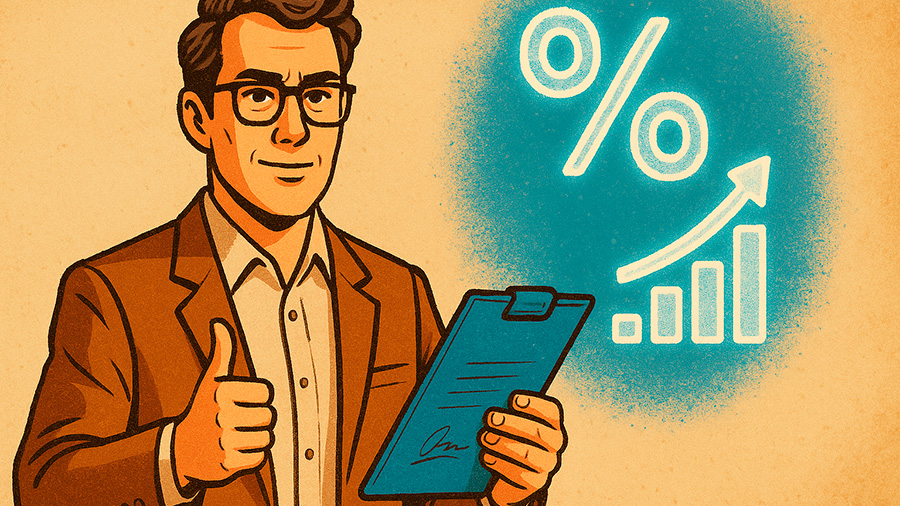
Getting approved for a loan is one thing; getting approved with the best possible terms is another. When banks, credit unions, or online lenders assess an application, they look beyond just numbers—they evaluate reliability, consistency, and financial behavior. If you’ve ever wondered how to unlock better rates and secure a deal that truly works in your favor, it all starts with understanding how lenders think and how you can present yourself as a trustworthy borrower. The difference between an average and a great loan rate can save you thousands over the life of a loan, making this knowledge one of the most valuable financial tools you can have.
Why Loan Rates Differ So Much
Lenders don’t hand out interest rates randomly. Each offer is based on a borrower’s perceived risk, which is largely determined by their credit profile. A high credit score signals to lenders that you consistently pay bills on time, keep debt under control, and manage money wisely. Low scores, on the other hand, indicate higher risk—so lenders charge more to protect themselves. Understanding this dynamic is the foundation of how to unlock better rates. The stronger your credit profile, the more negotiating power you have when applying for any kind of credit, from auto loans to mortgages to personal loans.
Factors That Influence Loan Rates
Before you apply for a loan, it’s important to understand what shapes the interest rate you’ll be offered. While each lender uses a slightly different formula, the main components are universal.
| Factor | Why It Matters | How to Improve It |
|---|---|---|
| Credit Score | Shows your history of managing debt and making payments on time. | Pay bills promptly, keep utilization low, and avoid excessive credit inquiries. |
| Debt-to-Income Ratio (DTI) | Measures how much of your income goes toward debt payments. | Reduce debt balances or increase income before applying. |
| Employment Stability | Lenders prefer borrowers with consistent, long-term jobs. | Stay in your current position or field for at least 1–2 years if possible. |
| Loan Type and Term | Shorter loans generally have lower rates; unsecured loans carry higher risk. | Choose shorter terms and, when possible, provide collateral. |
| Economic Conditions | Interest rates rise and fall with inflation and central bank policy. | Apply when rates are trending lower or refinance later. |
Each factor offers an opportunity to unlock better rates by taking deliberate actions before applying. For instance, paying off credit cards or consolidating small debts can significantly improve your debt-to-income ratio, making you a more attractive borrower.
Preparation Is Everything
One of the biggest mistakes borrowers make is applying for credit before they’re ready. Lenders value preparation—it shows responsibility. Here are key steps to take before submitting an application.
- Check your credit report. Get a free copy from all three major bureaus (Experian, Equifax, and TransUnion). Review it for errors, late payments, or outdated information that may be dragging down your score.
- Pay off small debts. Even reducing credit card balances by a few hundred dollars can improve your utilization ratio, which heavily influences your score.
- Build a strong payment history. Make every payment on time for at least six months before applying for new credit.
- Avoid new credit applications. Each hard inquiry slightly lowers your score, so space them out strategically.
- Save for a down payment. For secured loans like mortgages or auto loans, a larger down payment reduces lender risk and often leads to lower rates.
Taking time to prepare demonstrates financial maturity. Borrowers who follow these steps are far more likely to unlock better rates than those who apply impulsively.
The Power of Comparison Shopping
Another often-overlooked strategy is comparing multiple offers. Just as you wouldn’t buy a car without checking other dealerships, you shouldn’t accept the first loan offer that appears. Use prequalification tools—available through most lenders—to check potential rates without affecting your credit score. Comparing at least three to five lenders can reveal significant differences in annual percentage rates (APRs), fees, and repayment flexibility.
For example, a $20,000 personal loan with a 7% interest rate costs about $2,000 less in interest over five years than the same loan at 10%. That’s a meaningful savings for simply taking the time to explore your options. When you compare wisely, you naturally unlock better rates by forcing lenders to compete for your business.

Negotiating with Confidence
Many borrowers don’t realize that loan terms can be negotiated—especially if they have strong credit or a stable income. Banks and credit unions often have discretion within a certain range. If you’ve received multiple offers, you can use them as leverage. Politely explain that you’re comparing options and would like to know if they can improve their rate or reduce fees. Even a small reduction in the APR can translate into significant long-term savings. This proactive approach not only helps you unlock better rates but also shows lenders you’re financially savvy and well-informed.
Table: Sample Loan Rate Scenarios
| Borrower Profile | Credit Score | Loan Type | Offered Rate |
|---|---|---|---|
| Strong financial record, low DTI | 780+ | Personal Loan | 6.5% |
| Moderate credit history | 690–740 | Auto Loan | 8.9% |
| Recent credit issues | 600–660 | Unsecured Loan | 13.5% |
| No credit history, using secured loan | New Borrower | Credit Builder Loan | 10.0% |
These examples highlight how dramatically credit profiles affect pricing. The gap between good and excellent credit can easily equal several percentage points—which over time can mean thousands in extra interest. Maintaining a strong financial profile is the most reliable way to unlock better rates and keep borrowing costs under control.
When to Refinance
If you’ve already taken out a loan but your financial situation has improved, refinancing is a powerful way to reduce costs. Refinancing replaces your existing loan with a new one—usually at a lower rate. This can lower your monthly payment, shorten your term, or both. For instance, refinancing a 10% auto loan to a 6% rate on a $15,000 balance can save over $1,000 in interest. Borrowers with improved credit scores or higher income should revisit their loan terms regularly to ensure they continue to unlock better rates as their circumstances change.
How Behavior After Borrowing Affects Future Rates
Once you receive a loan, your behavior still matters. Paying on time, keeping your total debt manageable, and avoiding unnecessary borrowing all help you maintain or improve your credit standing. Conversely, missed payments or defaults can raise your perceived risk and make future loans more expensive. Think of your current loan as an investment in your financial future—each payment is a signal to lenders that you’re reliable and responsible.
- Make extra payments. Paying more than the minimum shortens the loan term and reduces interest costs.
- Set payment reminders. Automation helps prevent accidental late payments that could damage your credit.
- Reassess financial goals annually. Ensure that your loans still align with your income and spending priorities.
These habits reinforce your creditworthiness and position you to unlock better rates on future financial opportunities.
Your Rate Reflects Your Financial Habits
Every percentage point on a loan tells a story. It’s not just about numbers—it’s about how you manage responsibility, risk, and opportunity. Whether you’re applying for your first credit card or refinancing a mortgage, knowing how to unlock better rates gives you control over one of the most important aspects of personal finance: the cost of borrowing. By maintaining strong credit habits, shopping around, and being strategic about your financial presentation, you can ensure lenders see you as the low-risk, high-trust borrower you truly are. The payoff isn’t just in lower interest rates—it’s in long-term confidence, savings, and financial freedom.
